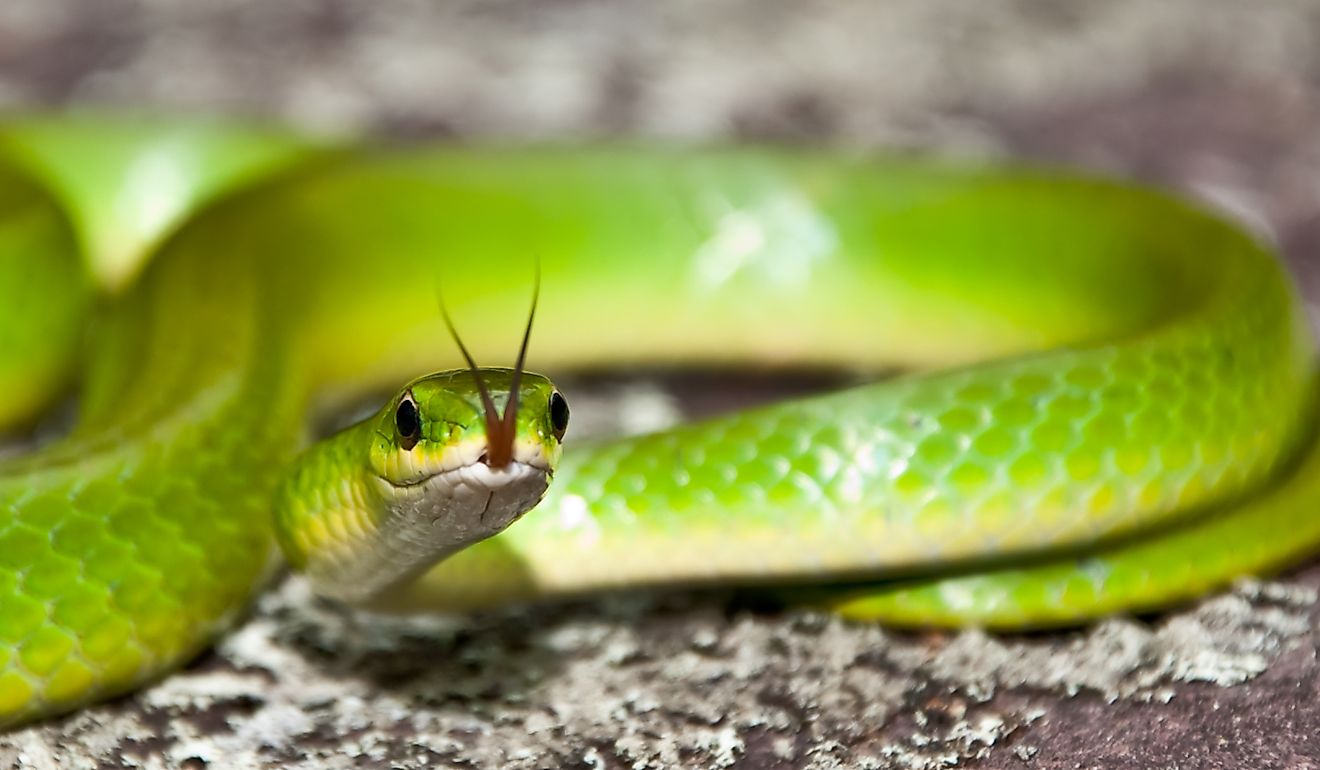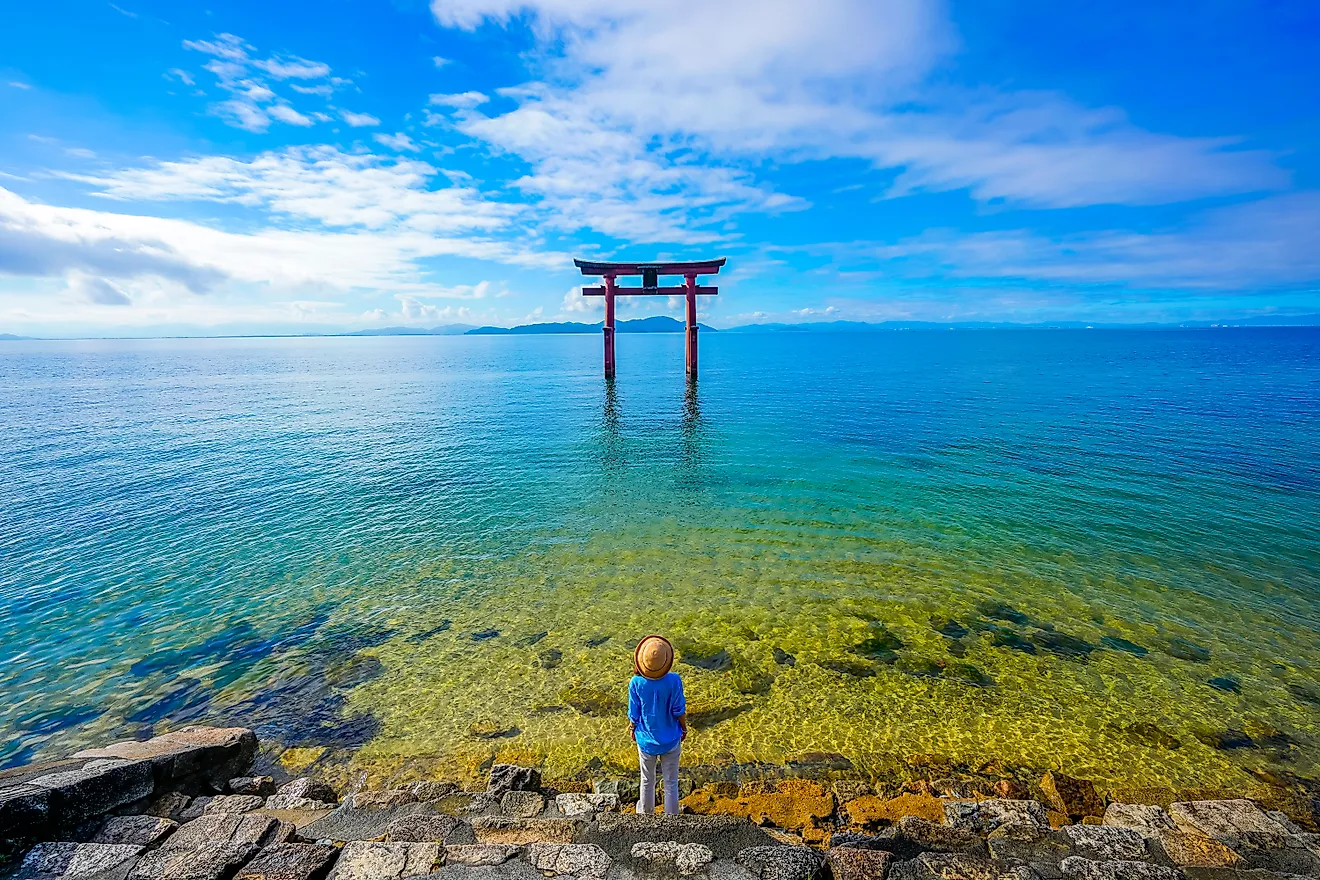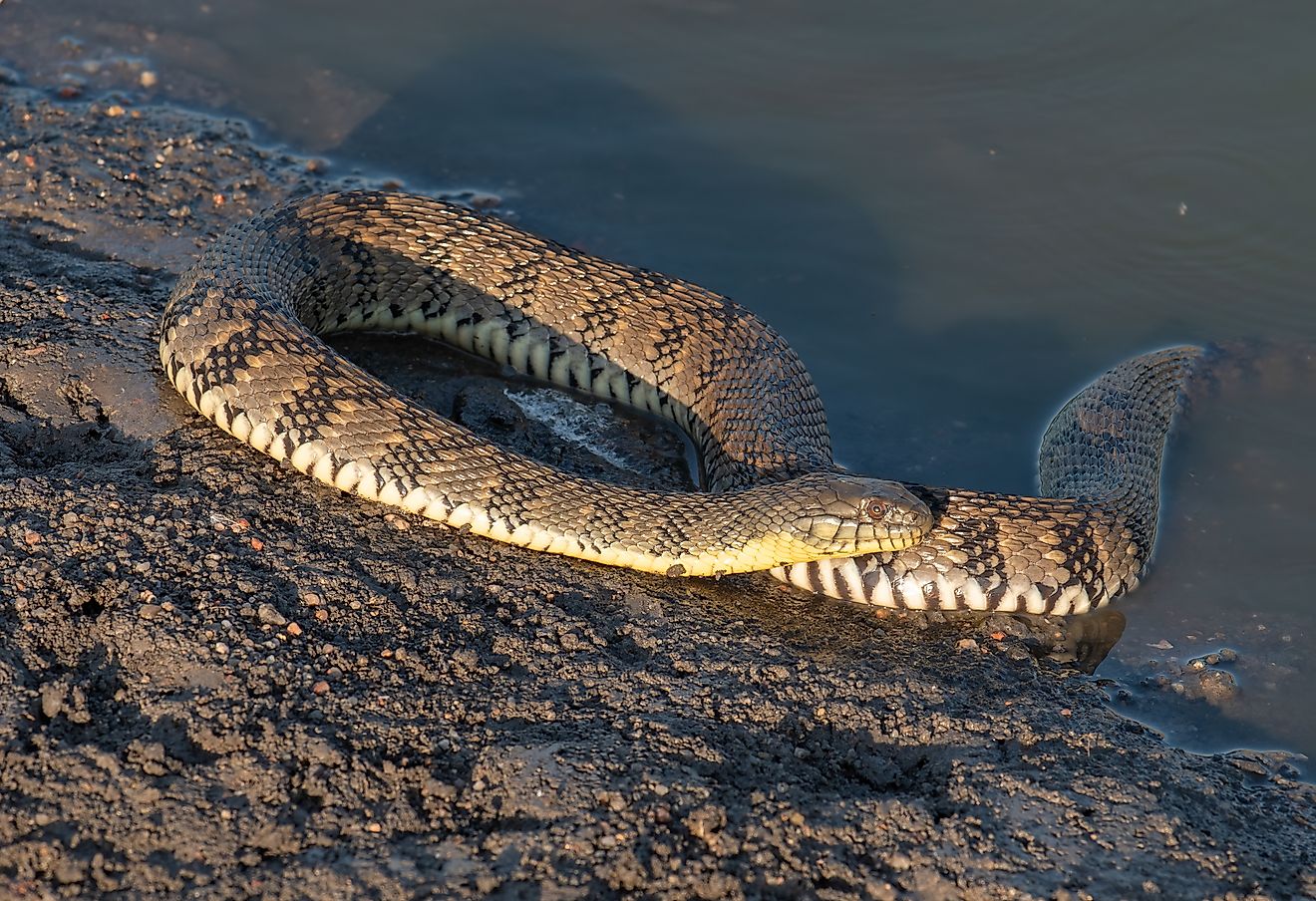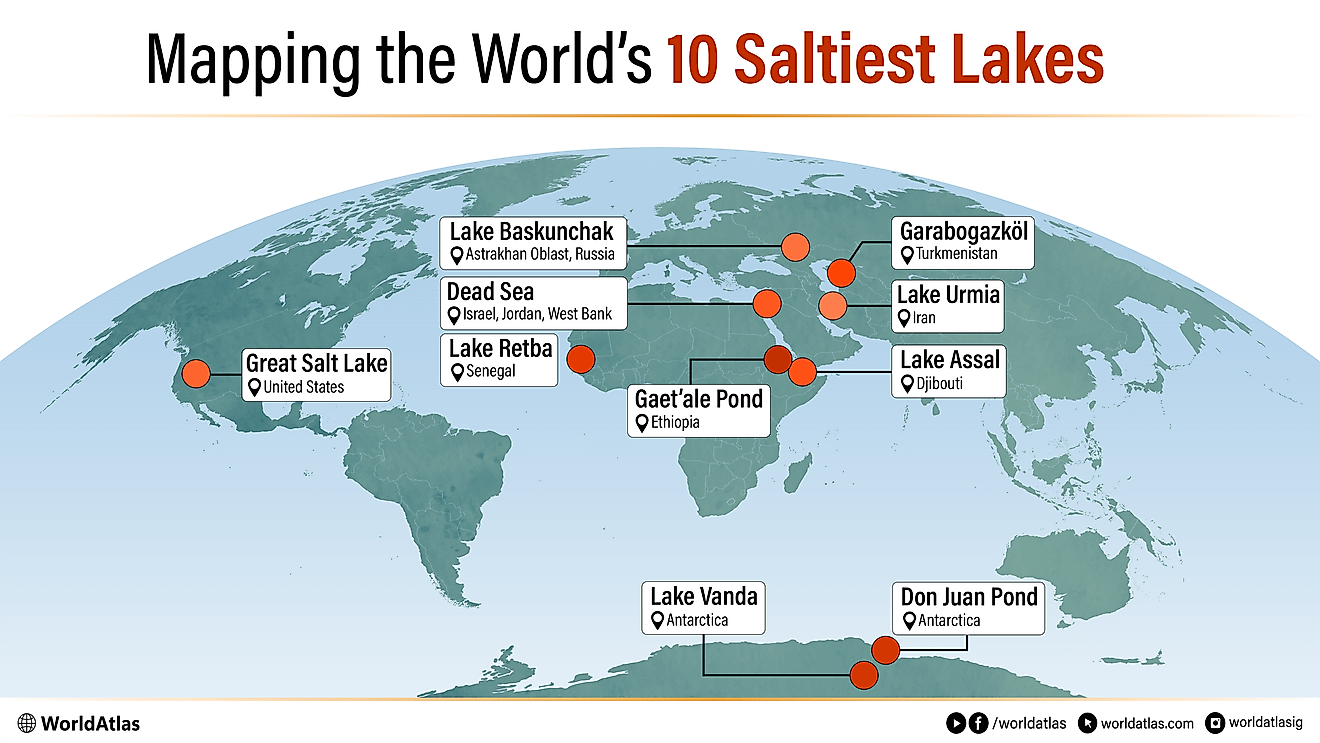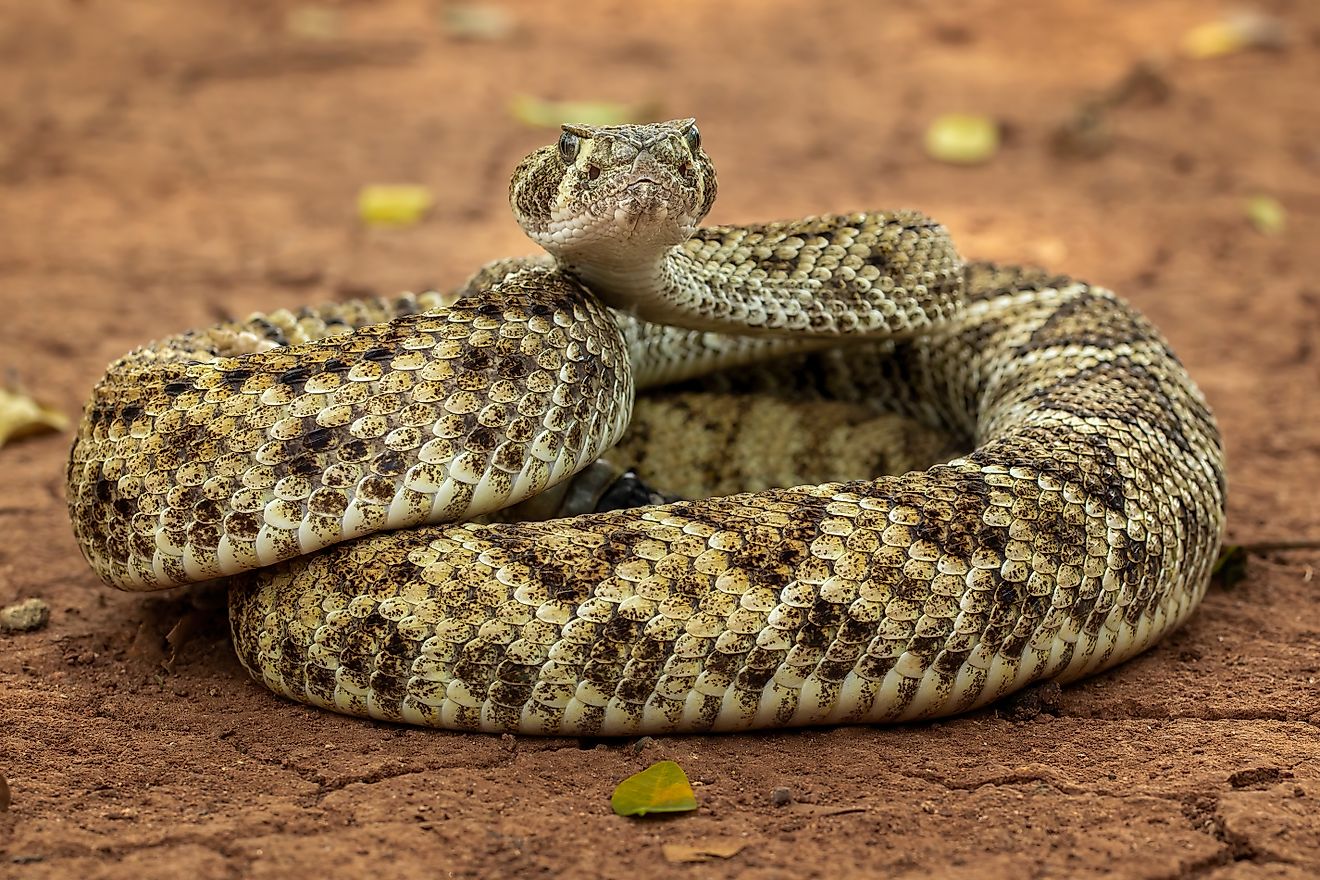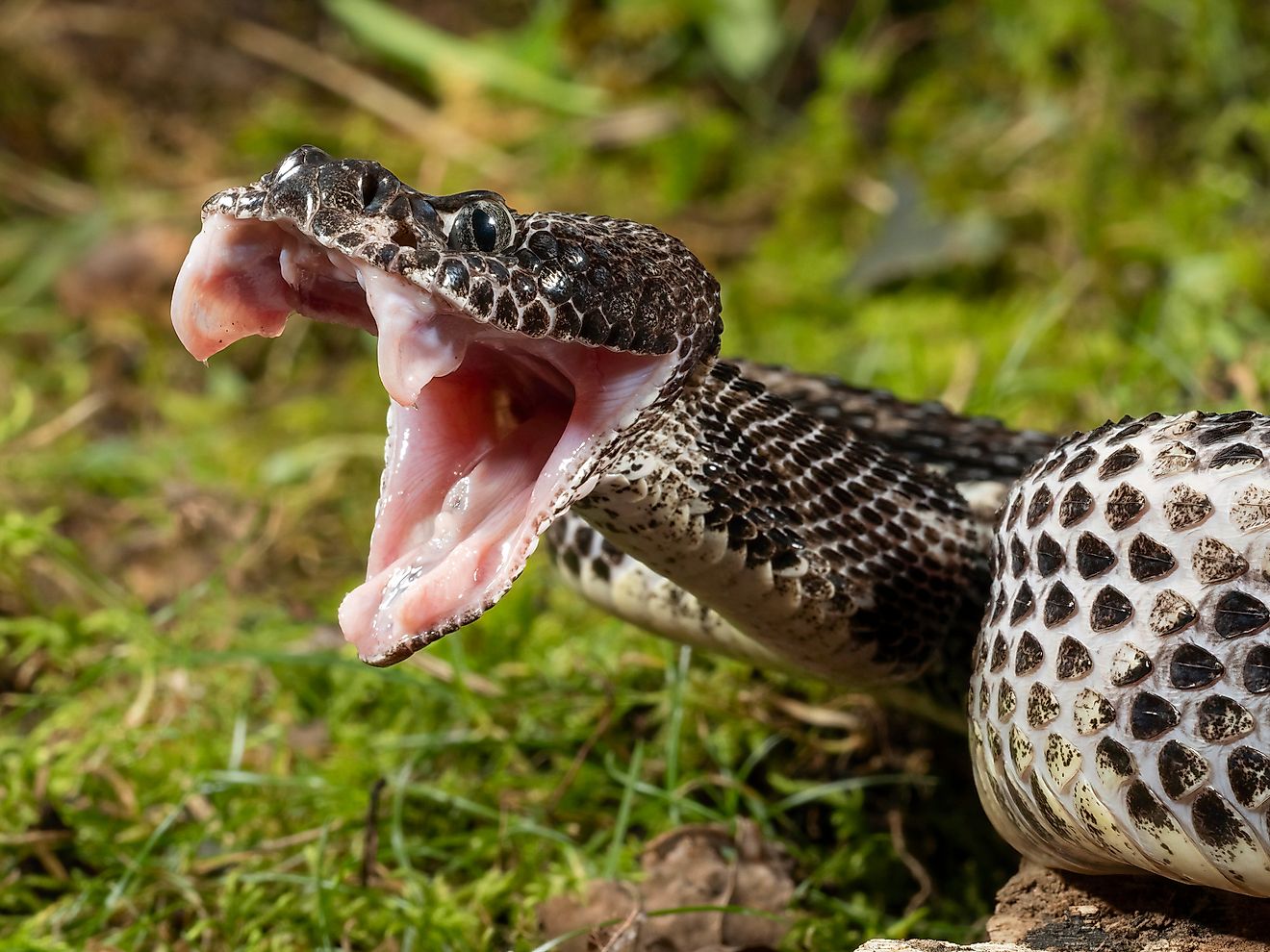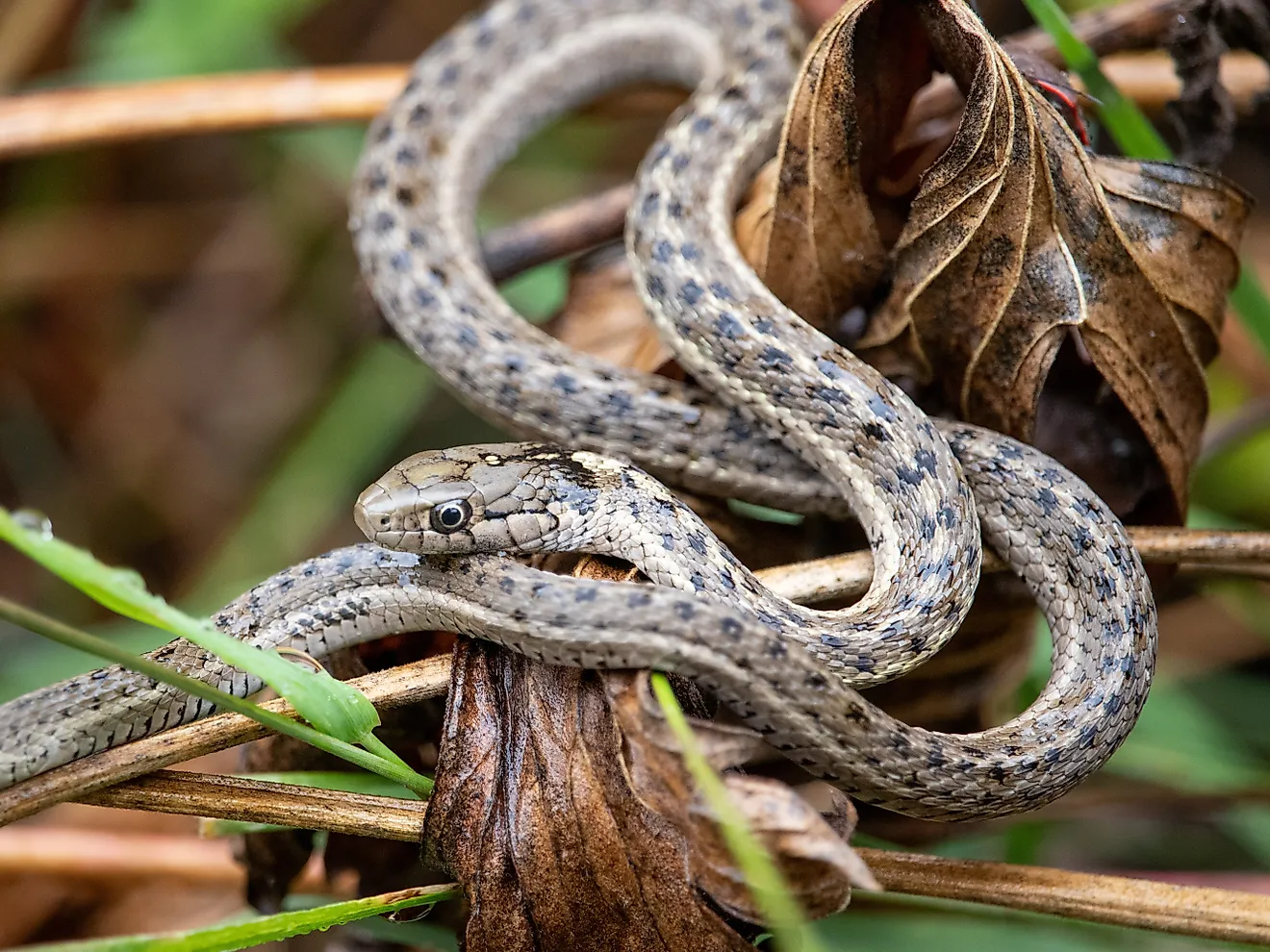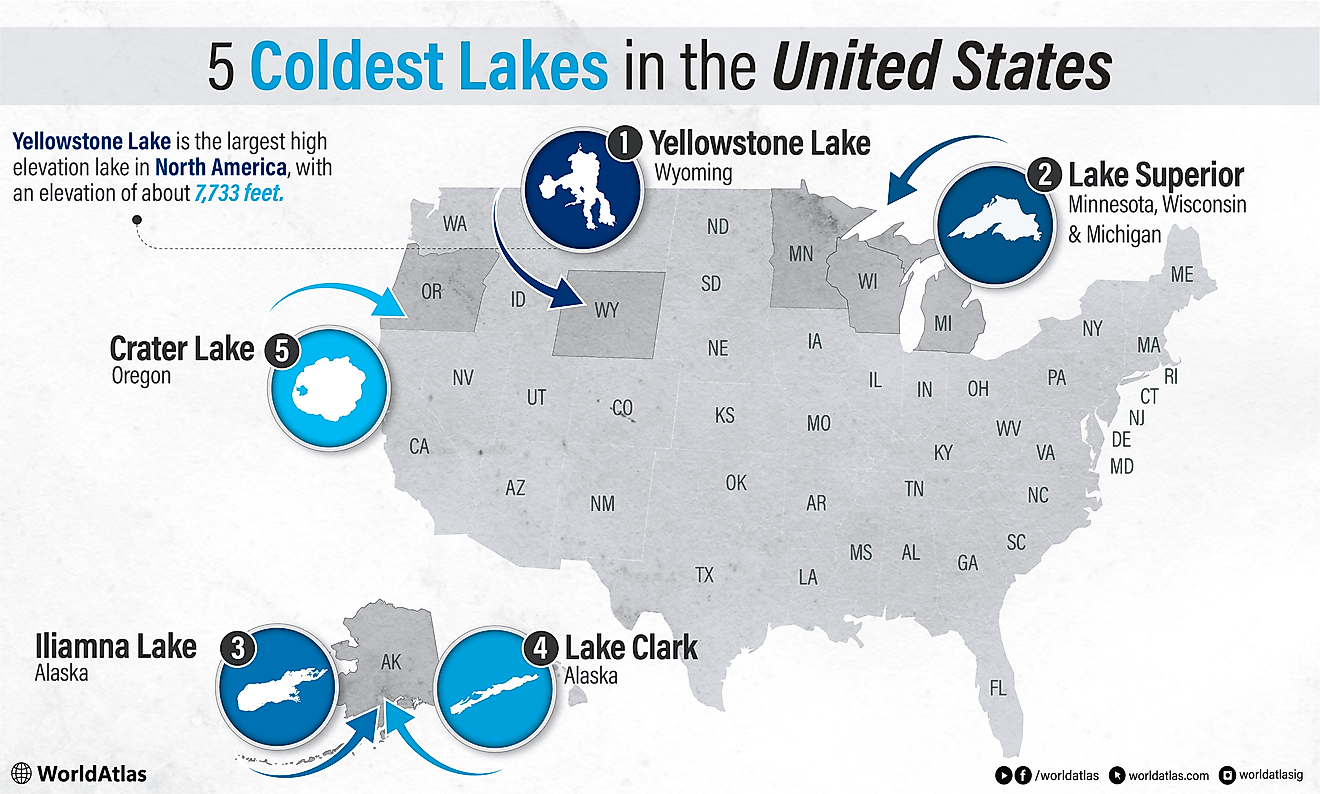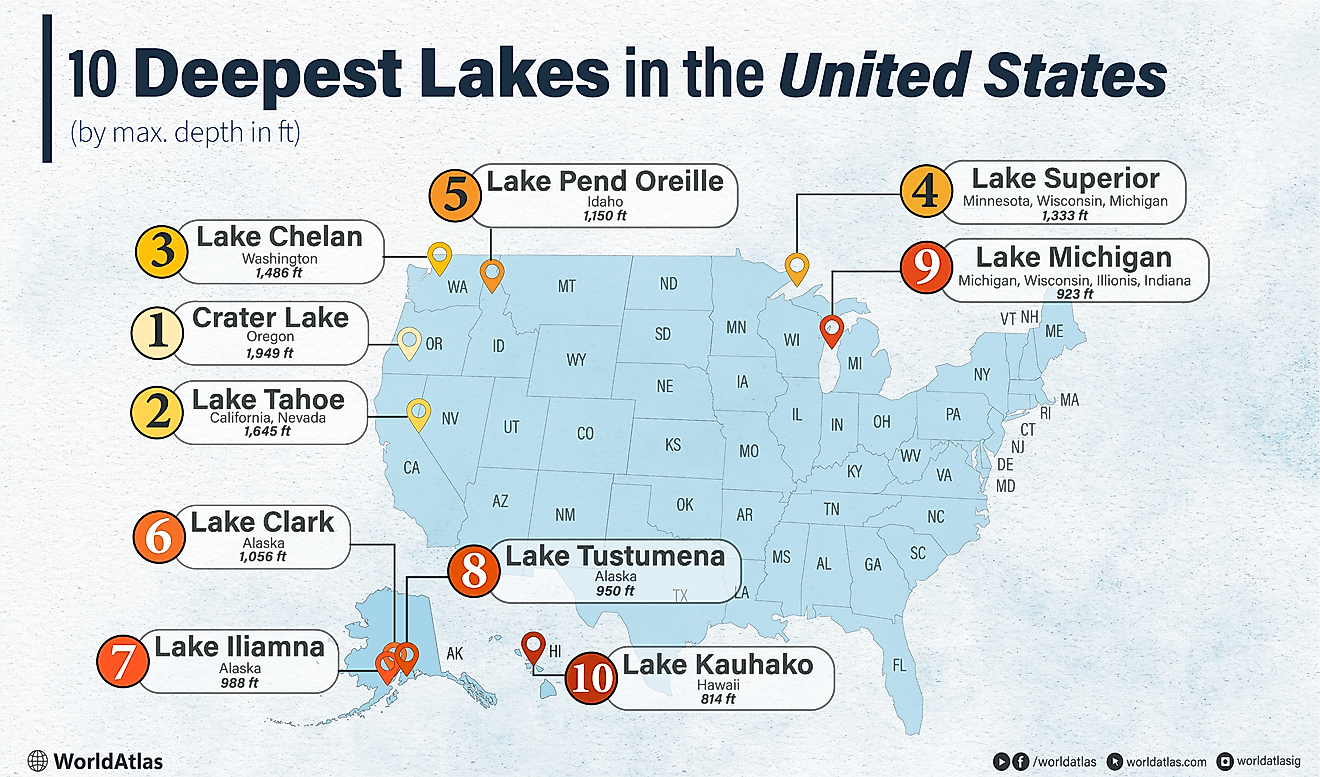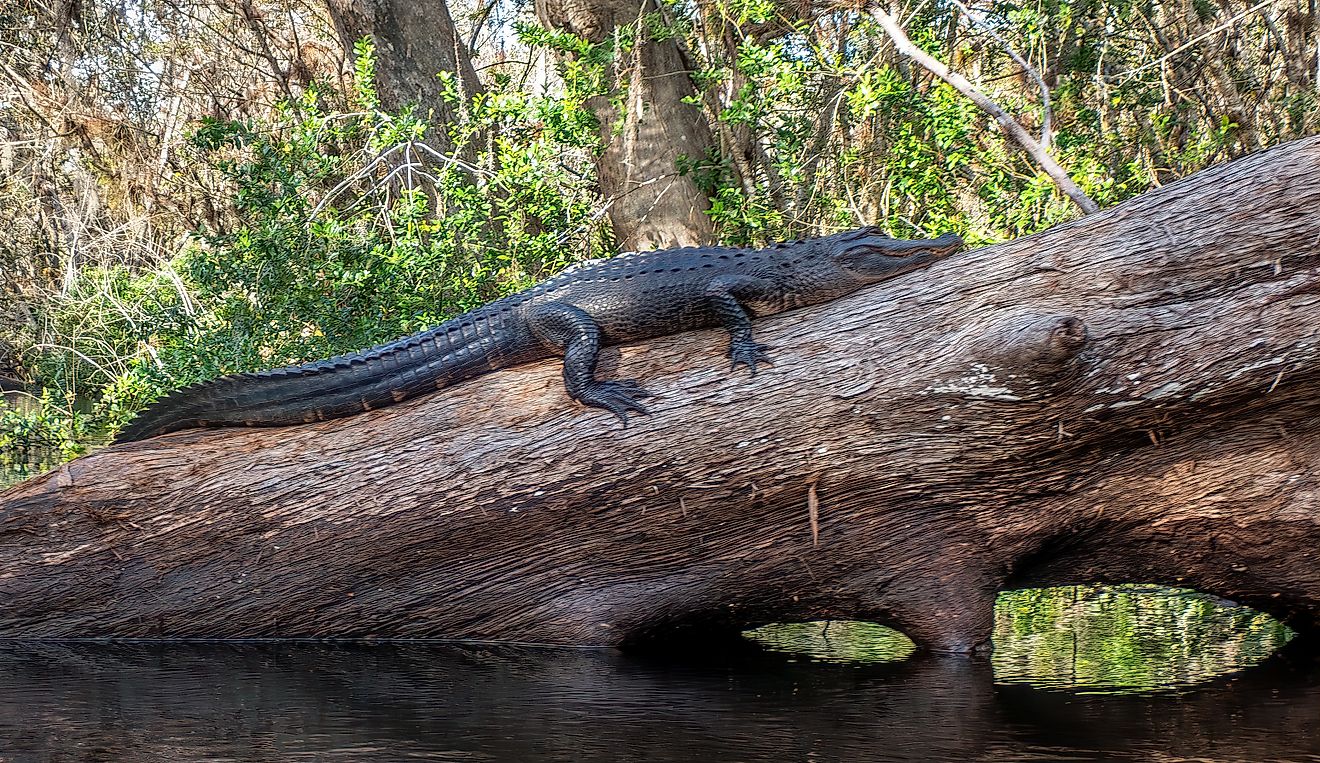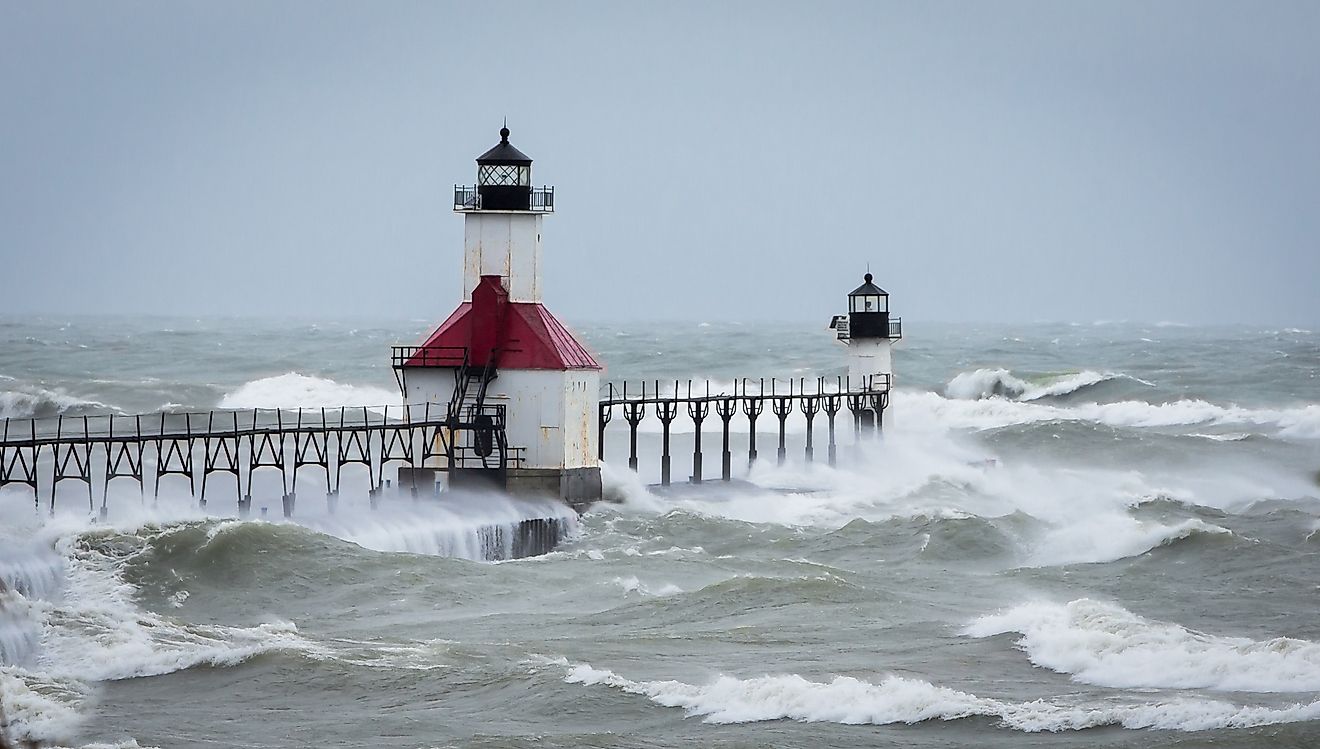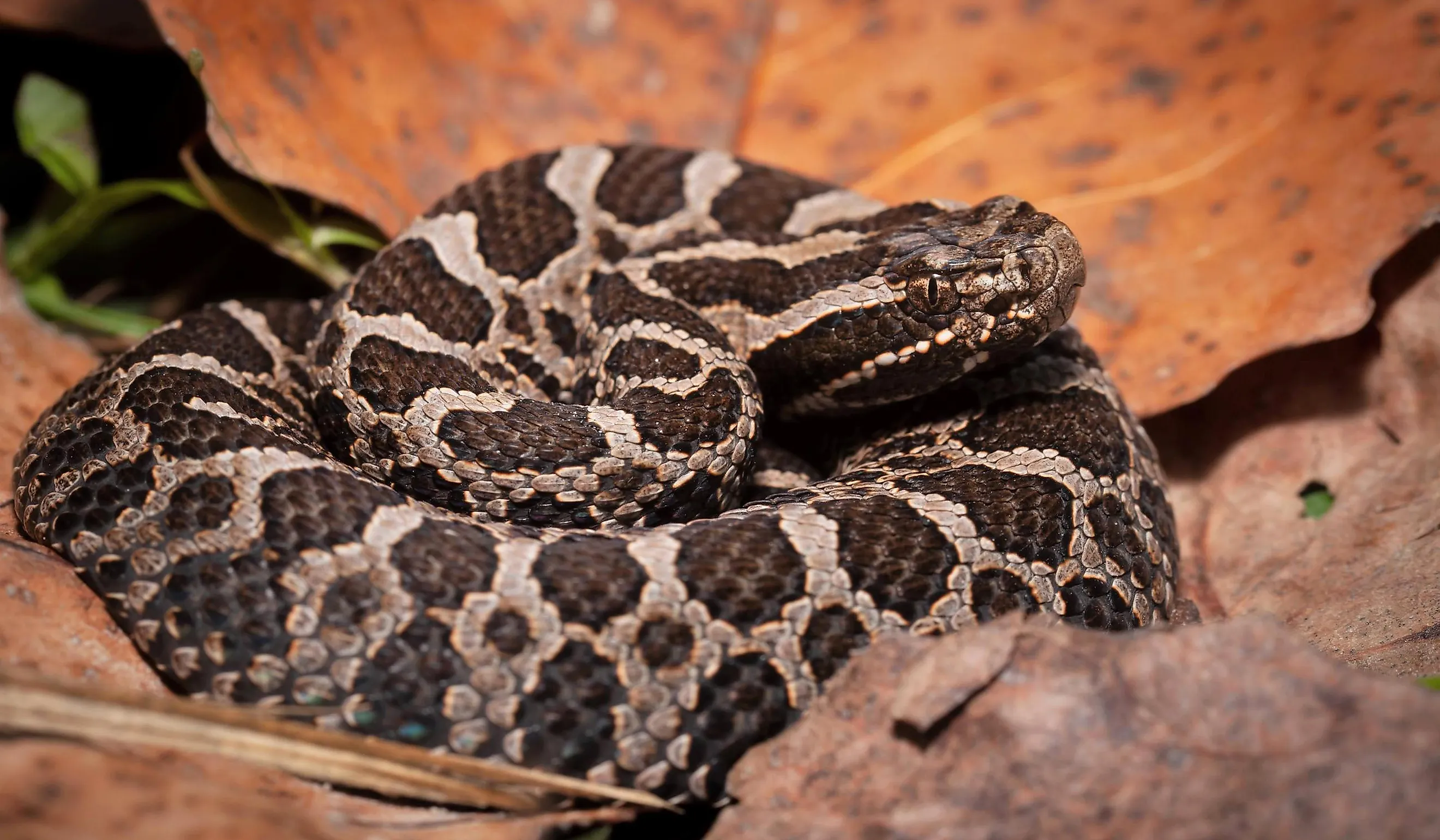
5 Most Snake-Filled Bodies Of Water In New York
New York has its fair share of lakes, rivers, streams, and wetlands, and ranks up there with the top ten U.S. states with the most water by area, coming in at #7, with Alaska, Michigan, and Florida taking the top three spots. The Empire State is home to 17 species of snakes, with both garter and water snakes being the most frequently encountered. In New York, water snakes are found in pretty much any body of water or wetland. These water snakes are typically dark brown or black with lighter colored bands and splotches along their bodies. They can grow up to five feet in length. While water snakes found in the state are non-venomous and harmless, they can be a bit temperamental and aggressive if provoked or startled. They are sometimes mistaken for a cottonmouth (also known as a water moccasin), a large venomous snake not found within the state borders.
Hudson River
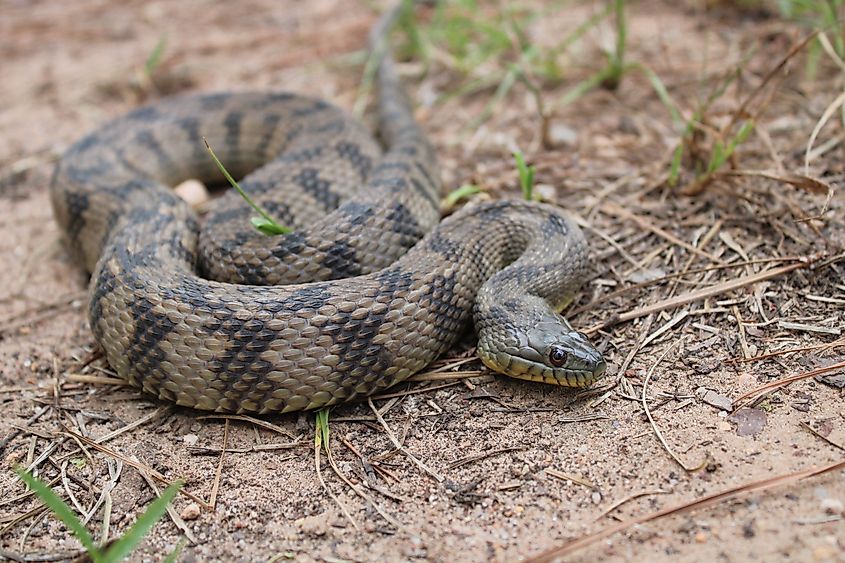
The 315-mile Hudson River runs through much of New York and a small part of New Jersey, flowing from the Lake Tear of the Clouds on Mount Marcy in the Adirondack Mountains, the highest peak in New York, and emptying into the Atlantic Ocean. Sometimes referred to as “America’s First River,” the Hudson is home to the northern water snake, which has a steady diet of live fish and amphibians. While the northern water snake prefers standing or slow-moving water, they are often spotted basking on rocks along the riverbanks and adjacent wetlands near the Hudson.
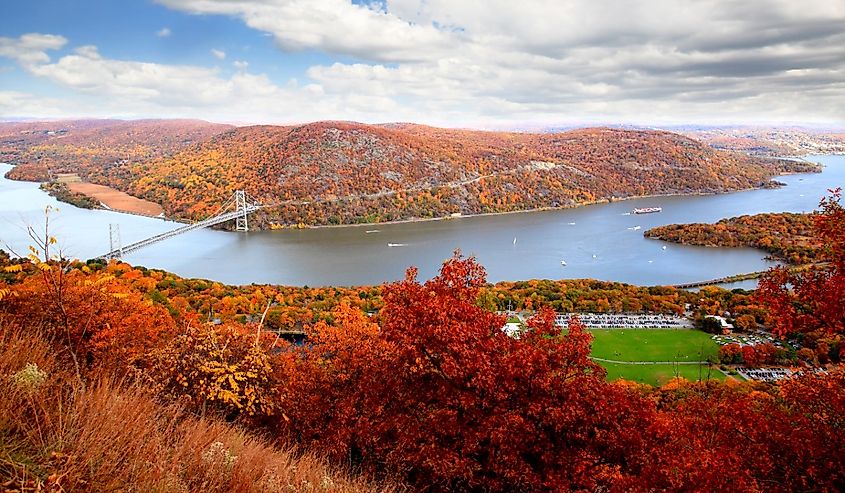
Several other species of snakes are found near the river, including the plain-bellied snake and the diamondback water snake. Plain-bellied water snakes are semi-acquatic, hunt for food in water, and are excellent swimmers. The diamondback water snake lives primarily in and around bodies of water like rivers, lakes, and ponds, and will slip into the river and swim away if threatened.
Montezuma National Wildlife Refuge
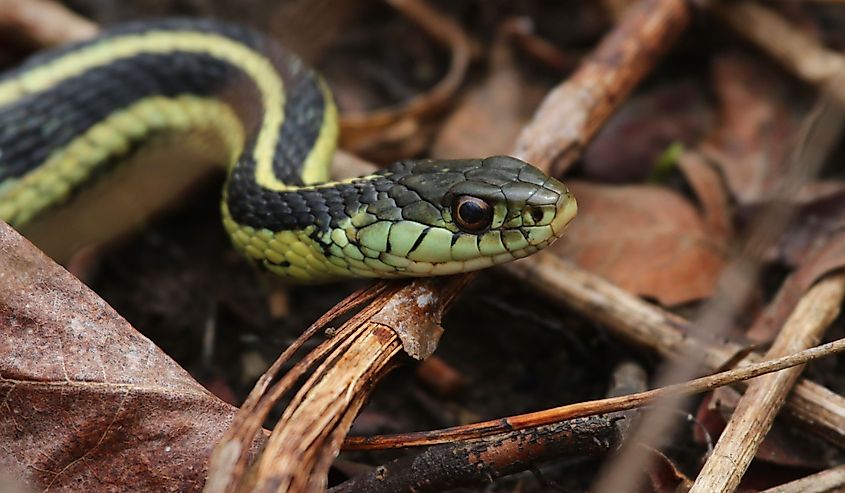
The Montezuma National Wildlife Refuge is located at the northern edge of Cayuga Lake in the Finger Lakes region of New York. The refuge spans approximately 10,000 acres, encompassing vast areas of wetlands, marshes, swamps, and waterways that provide ideal habitats for a wide range of wildlife, including snakes. Renowned for being a birding hotspot, the refuge offers an essential habitat for over 300 bird species, 100 of which nest on the refuge, including bald eagles and other birds of prey.
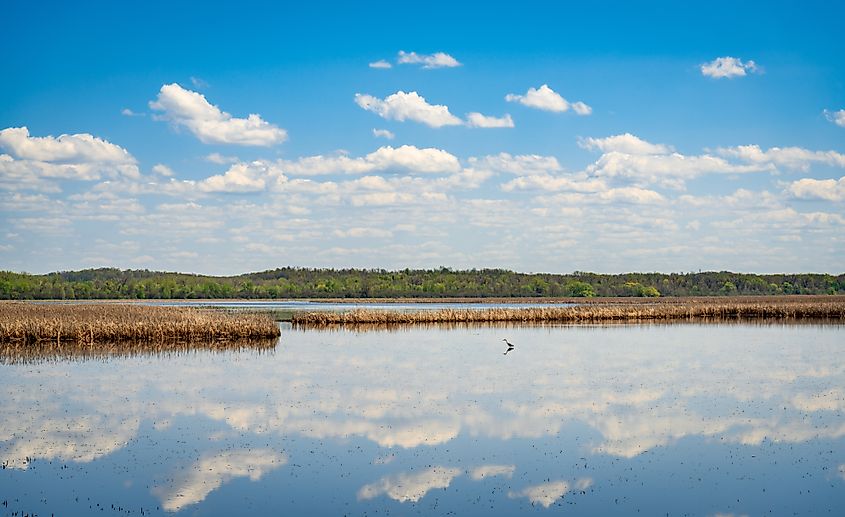
There are several ways for nature lovers to enjoy the refuge, including taking the 3-mile Wildlife Drive auto tour route or hiking along the numerous nature trails that wind through wetlands, such as the 1.3-mile Esker Brook Nature Trail, the South Spring Pool Trail, or along the banks of the Cayuga-Seneca Canal. Herpetophiles (snake lovers) may see three species of non-venomous snakes that make their home in the Montezuma National Wildlife Refuge. These include the most widespread snake species in North America, the common garter snake, the northern water snake, and the eastern milksnake, a boldly-patterned serpent with brown or reddish blotches on a tan or grey body.
Bronx River
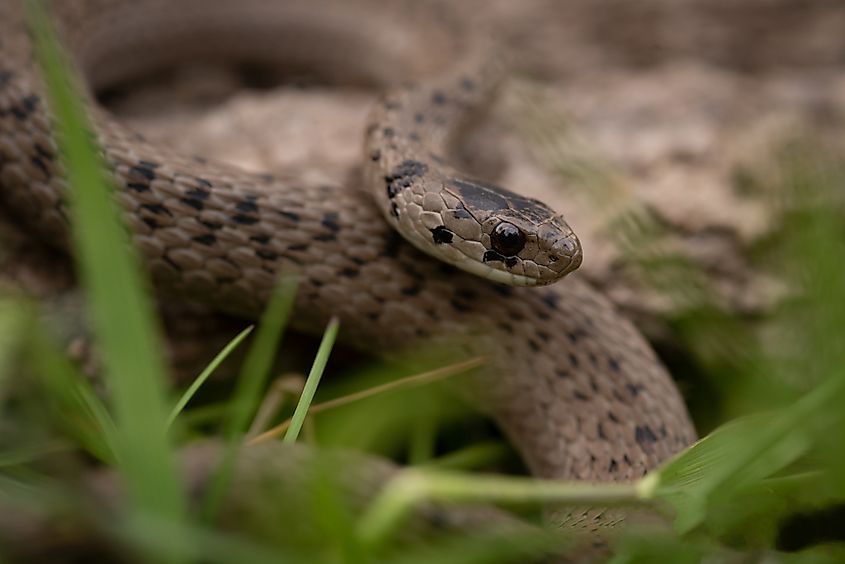
The 24-mile-long freshwater Bronx River has become an increasingly popular destination for water enthusiasts who want to experience the thrill of urban kayaking and canoeing in New York City. An eight-mile segment of the river, the Bronx River Blueway, is a dedicated water trail—one of the first National Water Trails in the U.S.—that stretches along the Bronx River as it flows from Shoelace Park downstream to Soundview Park, where it enters the East River.
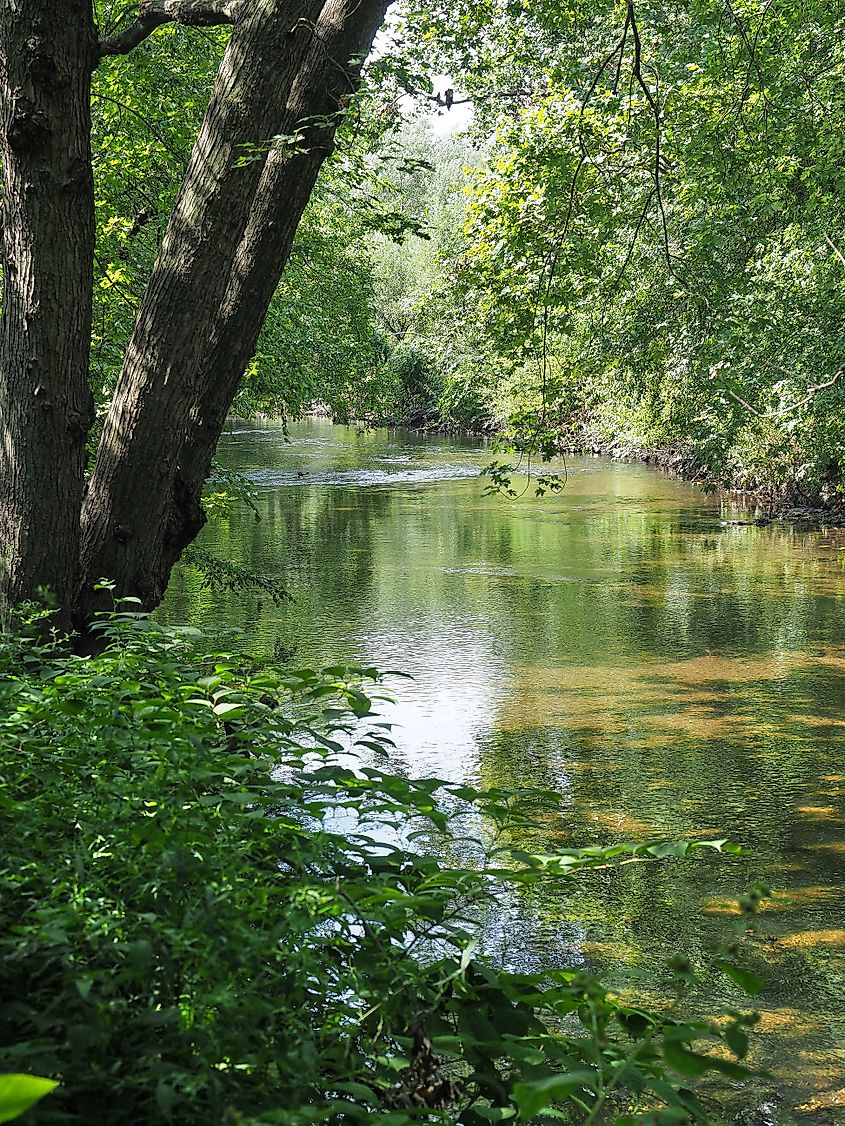
Paddlers can expect to encounter several species of snakes along the waterway, including the common garter snake, northern water snakes, and Dekay’s brown snake, sometimes called “the city snake.” This snake is one of the smallest in the state, and while the secretive reptiles can be found under leaf litter, rocks, or logs, they prefer moist habitats and can be seen near rivers, such as the Bronx.
Echo Lake
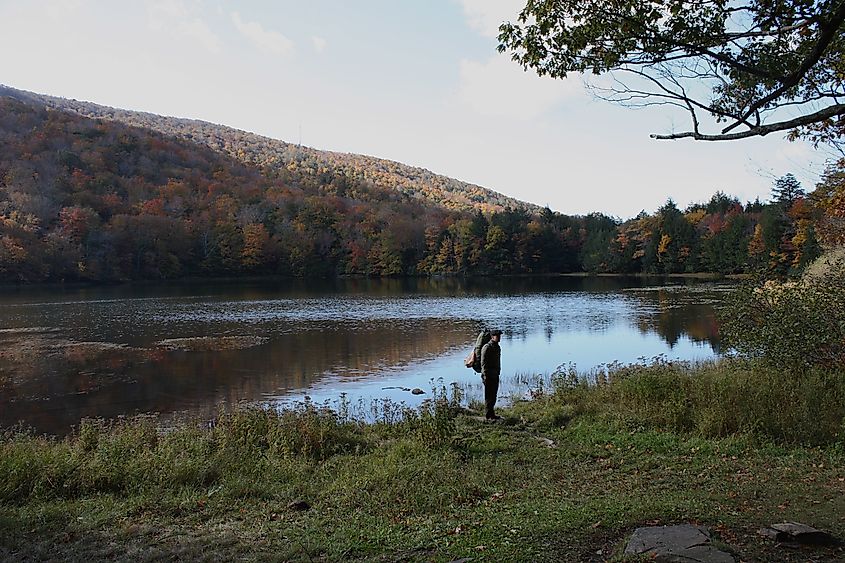
Widely considered one of the most snake-infested lakes in New York, the 13-acre Echo Lake is in the Catskill Mountains and is home to the northern water snake. The northern water snake is the Empire State’s only “true” water snake, and can be found in almost every freshwater body of water, though they prefer slow-moving water like ponds, marshes, and lakes. Northern water snakes are not venomous, but they have sharp teeth that they won’t hesitate to use in self-defence if threatened. While the bites are often not even felt, the snake's saliva contains an anticoagulant, which can cause bites to bleed. Water enthusiasts enjoying fishing, boating, or swimming in Echo Lake are wise to give these water snakes a wide berth.
Cicero Swamp
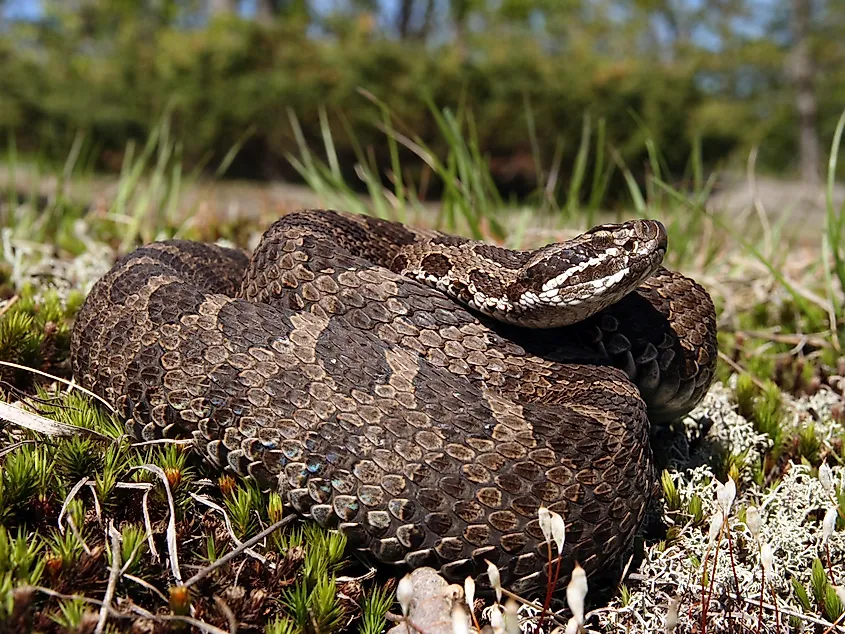
The Cicero Swamp is a 5,000-acre wildlife wetland, managed by the New York State Department of Environmental Conservation, about twelve miles north of Syracuse. It is a popular destination for outdoorsy urban explorers who enjoy fishing, hiking, and birding, or for herp enthusiasts who want to learn more about the eastern massasauga rattlesnake. One of only two known massasauga populations in New York State, visitors may not catch a glimpse of the snakes, but they may see the reptiles’ tracks slithering through the swamp.
The endangered rattlesnake (also known as the pygmy rattlesnake) is the smallest of the three venomous snakes found in the state; the others being the timber rattlesnake, and the copperhead. The eastern massasauga grows up to 40 inches in length and has a broad body with a wide head. They have a gray or brownish-gray body, with a distinctive row of dark, hourglass-shaped markings along the back and rows of smaller, dark spots on each side. The rattlesnake features nine prominent scales on the crown of its head.
Safety Tips for Exploring New York's Most Snake-Filled Bodies of Water
Most snakes found near bodies of water in New York are non-venomous, but it’s important to avoid provoking them. Venomous snakes in the state are found in isolated forested areas, not typically near bodies of water, with the exception being the eastern massasauga rattlesnake, whose preferred habitat is swamps and bogs. If visitors are lucky enough to encounter a snake in or near water, give it space—it’s likely just hunting for food or basking in the sun.
